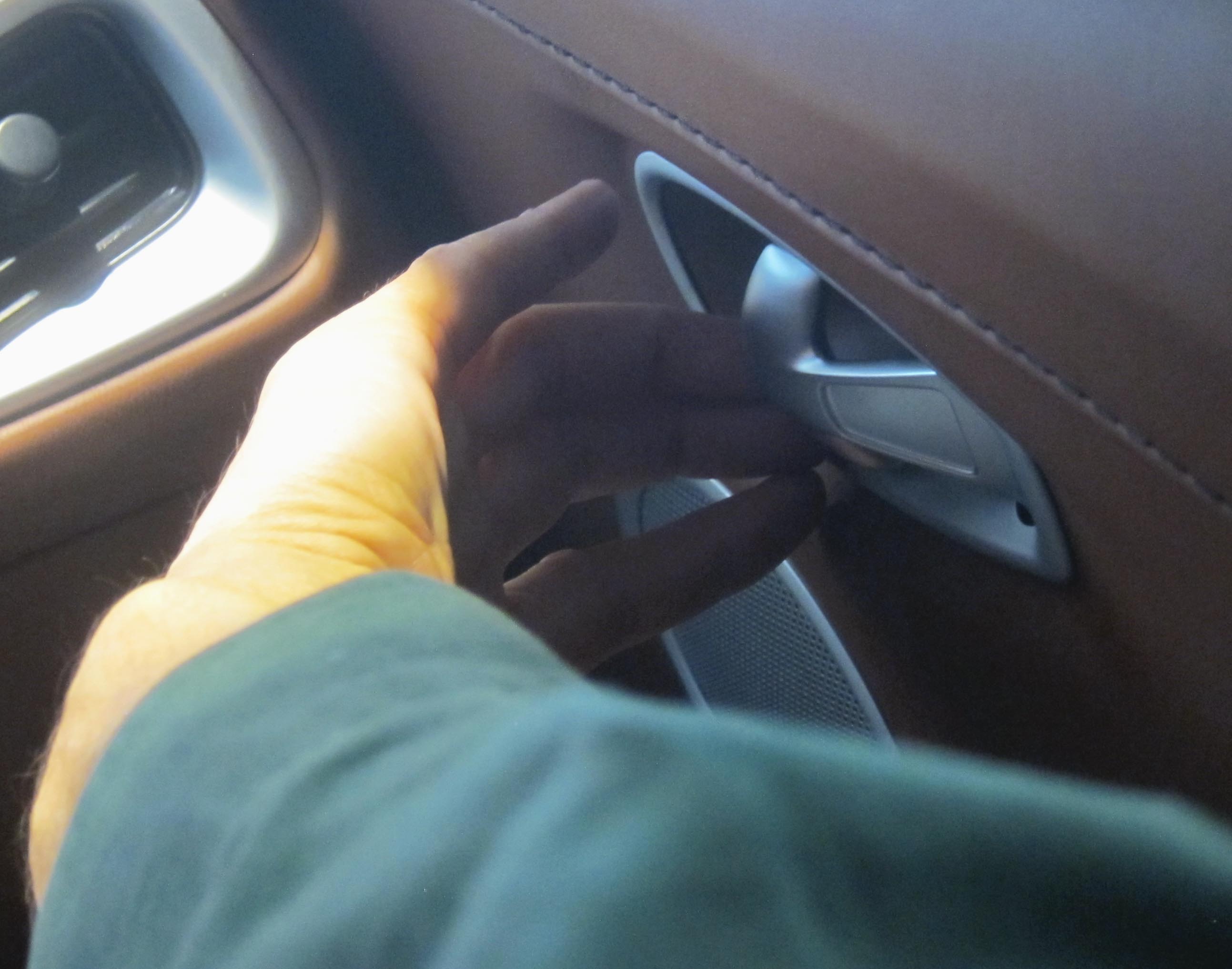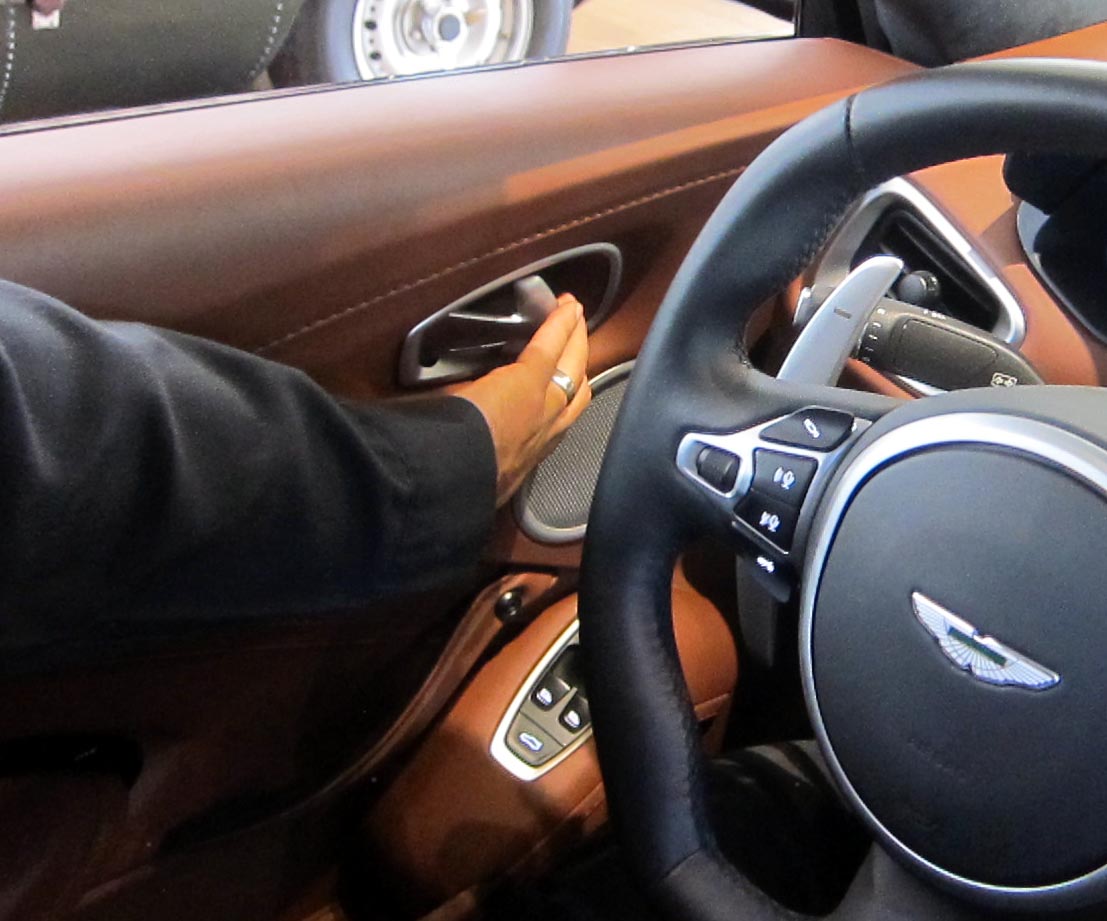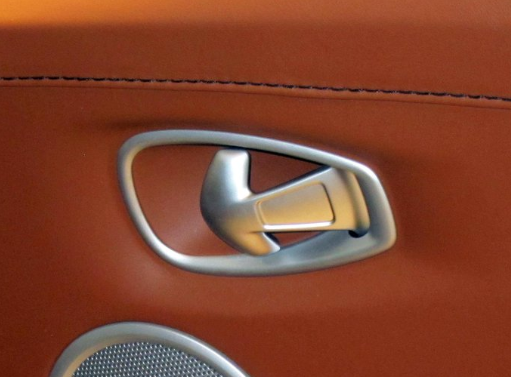Tweet this page.
Wikipedia: Dutch Reach Overview

For annotated summary, see Dutch Reach under Dooring in Wikipedia or click image.
How Ergonomics Can Teach the Reach
Handle designed for far hand
Aston Martin's 2019* Vantage sports car features a uniquely designed interior door latch lever which is most comfortably pulled by a motorist's far hand. (See video at lower right.)
Multiple features: lever design, latch inset and placement on the door, and door cushion contour, all seem to work together. They likely result from human factors and ergonomic thinking, research and creative design to commit driver and passenger to the far hand method. While stylish, this innovation is certainly not gratuitous. Rather one must infer it serves one or more significant purposes, such as increased ease and/or safety when exiting the vehicle.
The short lever points forward, is arched and angled in, and ends in a chevron or winged T which is itself somewhat curled or cupped for first & middle fingers to grasp and pull.
The lever is also located just forward of and sits aside the steering wheel. The lever is easily reached by the far arm and hand whose index and middle fingers can comfortably engage the cupped T of the lever to pull and open the latch. One's far hand orients with thumb up, upper two fingers curve to hook the lever.
To properly operate the lever, one's fingers must grasp it from the front of the chevron, one finger above and one below the chevron's gentle point. This is easily done with the far hand.
'Normal' car door handles - while considerably varied in design - typically favor the near hand and it's an easy matter to reach with the near hand and insert fingers to flip it open.
But attempts to engage and pull open the Aston Martin lever with the near hand is awkward if not impossible.
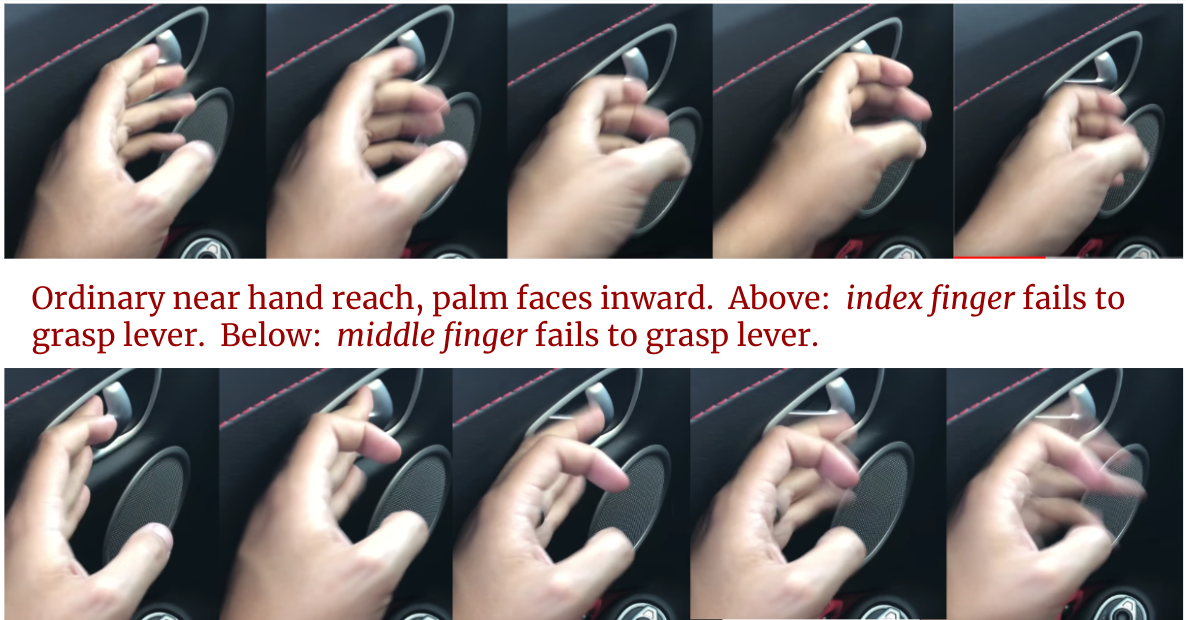
Fingers of near hand cannot gain a secure grip on lever and slip off back edge of chevron wings with normal near hand extension, palm facing inward. Photos: Doug De Muro's video review of Aston Martin 2019 Vantage,
You can reach for it with the near arm as one normally does but then find it difficult to insert one's fingertips behind the chevon to get a hold on it, pull back and hang on. For you get little purchase on the lever and your finger or fingers slip off. This is partly because the Vantage lever and its cupped end is recessed and you must arch your wrist back to try and scoop your finger tips in behind the chevron's back edges. At best one gets a finger tip in behind the chevron but which readily slips off. Furthermore, the flat wide stem of the lever impedes adjacent fingers from working well in concert, if at all.
Alternatively, one can attempt to open the latch by twisting one's near arm so one's palm faces the lever. To do so, one extends the near arm and rotates it so the thumb points down [rotate near arm clockwise for a US driver and counter-clockwise for US front passenger]. Then one must flex the wrist to point the fingers in to engage the cupped lever from its front. But when one attempts to pull back on the lever to open, one discovers that the elbow needs room to bend outward to the side. But in practice the elbow hits up against the door, requiring further contortions to gain space necessary bend it and pull back to open the latch. [See photos at top right of page.]
The door's shock-absorbent cushion design further encumbers bending the near elbow. For the Vantage door padding has a convex contour widest just below the window. Its inward flare curtails flexion of the near-arm elbow just as one attempts to pull back on the lever The blocking effect is maximized when the seat position is properly adjusted for safe driving.
These three features: 1) front pointed chevron lever, 2) forward lever placement and height, and 3) door cushion contour with recessed latch, all work together to discourage near hand use.
Contrariwise, the far arm and hand can naturally and comfortably reach the cupped lever whose unusual chevron-winged end invites index and middle finger to engage & pull with ease.
How well the redesigned lever alone would induce far hand use absent the contouring &/or relocation of the lever is a question. But it seems even without Aston Martin's cushion-bulge, near arm rotation, grasp and flexion would be awkward if not confounded by even a flat door surface for most drivers and passengers. That the lever is recessed into the door rather than protruding out, may also serve to keep the near arm elbow close in against the door and permit even less space for its elbow to bend.
Other possible motivations for this innovation await clarification. That it might be a stylist's conceit seems unlikely. Being a sports car, does it's low to the ground chassis and absence of rear side windows make exiting more dangerous? Is its long door length a factor, it being needed to make egress more comfortable? But such a long door increases dooring risk. If the door itself is power-assisted perhaps the far hand method may also intend to help motorists maintain control of its speed and extent of opening.
If anyone reading this has informed knowledge about this unique design, your insights would be most welcome. [Find Contact here]
*Lever first introduced in 2018 edition.
Door Lever for Dutch Reaching!
Designing-in Road Safety...
This is the interior door handle in an Aston Martin Vantage 🇬🇧
It’s easier to open with the hand furthest from the door than the hand nearest...
...this encourages you to do the #DutchReach and look over your shoulder before opening the door 👍 🚲🏍 pic.twitter.com/AKi1IEBxnj
— Lincs Police Rural Crime Team🚜 (@LincsRuralCrime) September 28, 2019
'Dutch Reach Lever' Demo @ 8m 12s
Doug DeMuro of AutoTrader.com reviews the 2019 Aston Martin Vantage. Lever design explained at 8 m 12 s. Video link here.
Long shot goal: Get Dutch Reach lever into mass-market autos!
This 'human factors' ergonomic design would automatically en-train far hand use, reducing the difficult work of education-campaign-driven behavior change and reliance on voluntary practicing for habit swap adoption, memory, physical cues or signage in the vehicle It pretty much insists that occupants use their far hand to open.
If we can get experts & insurers to confirm its safety value, perhaps regulatory authorities would require such a design as standard. Given this is primarily a minor hardware change, it could prove a reasonable ask or demand.
If you, Dear Reader, have any thoughts, suggestions, contacts on how to pitch and get this to auto manufacturers please get in touch with this Project or better yet, just do it! Pass along the link to this web page to any contacts you have in the auto manufacturing, design or road safety world! And thanks!
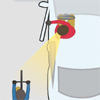
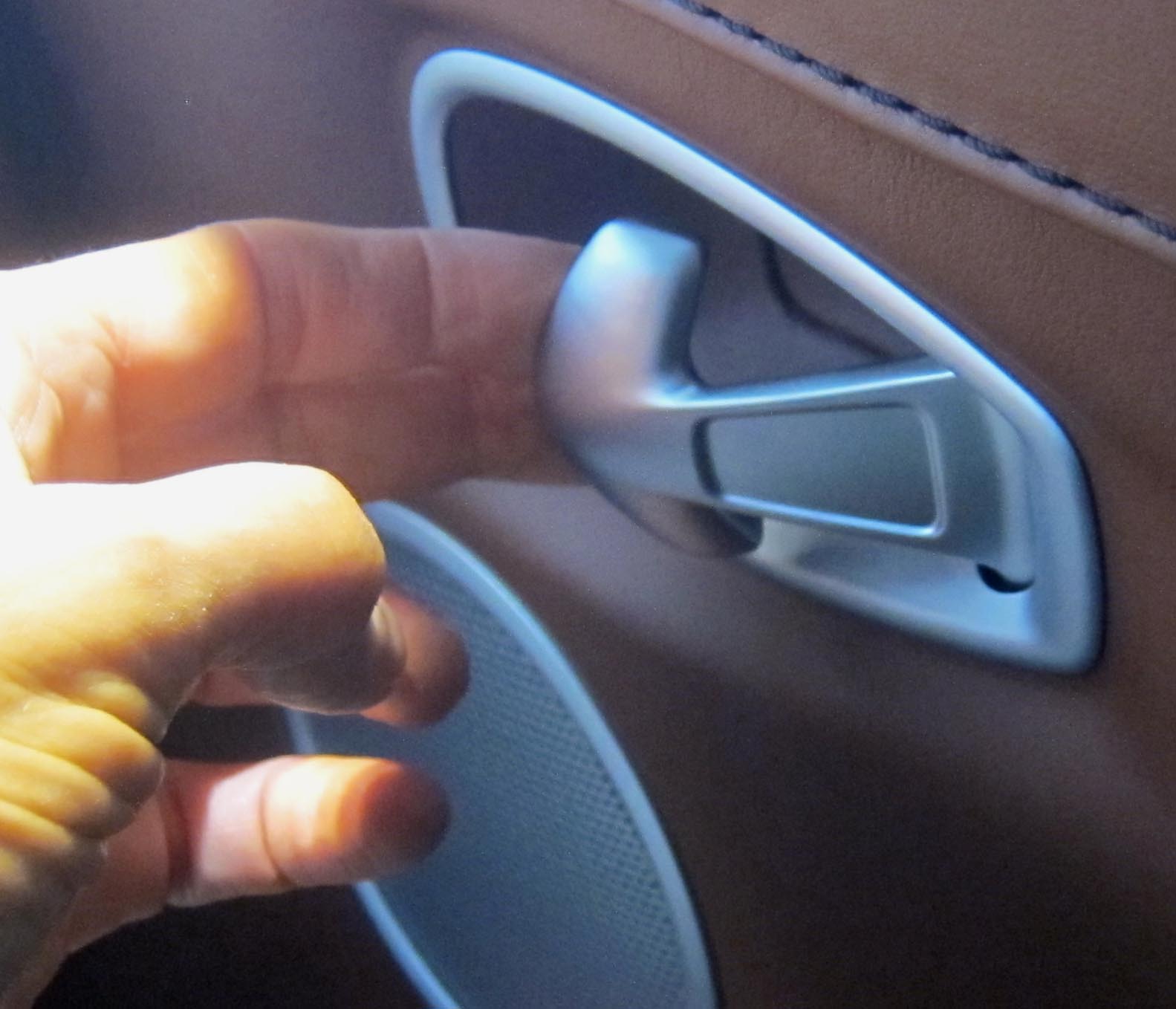
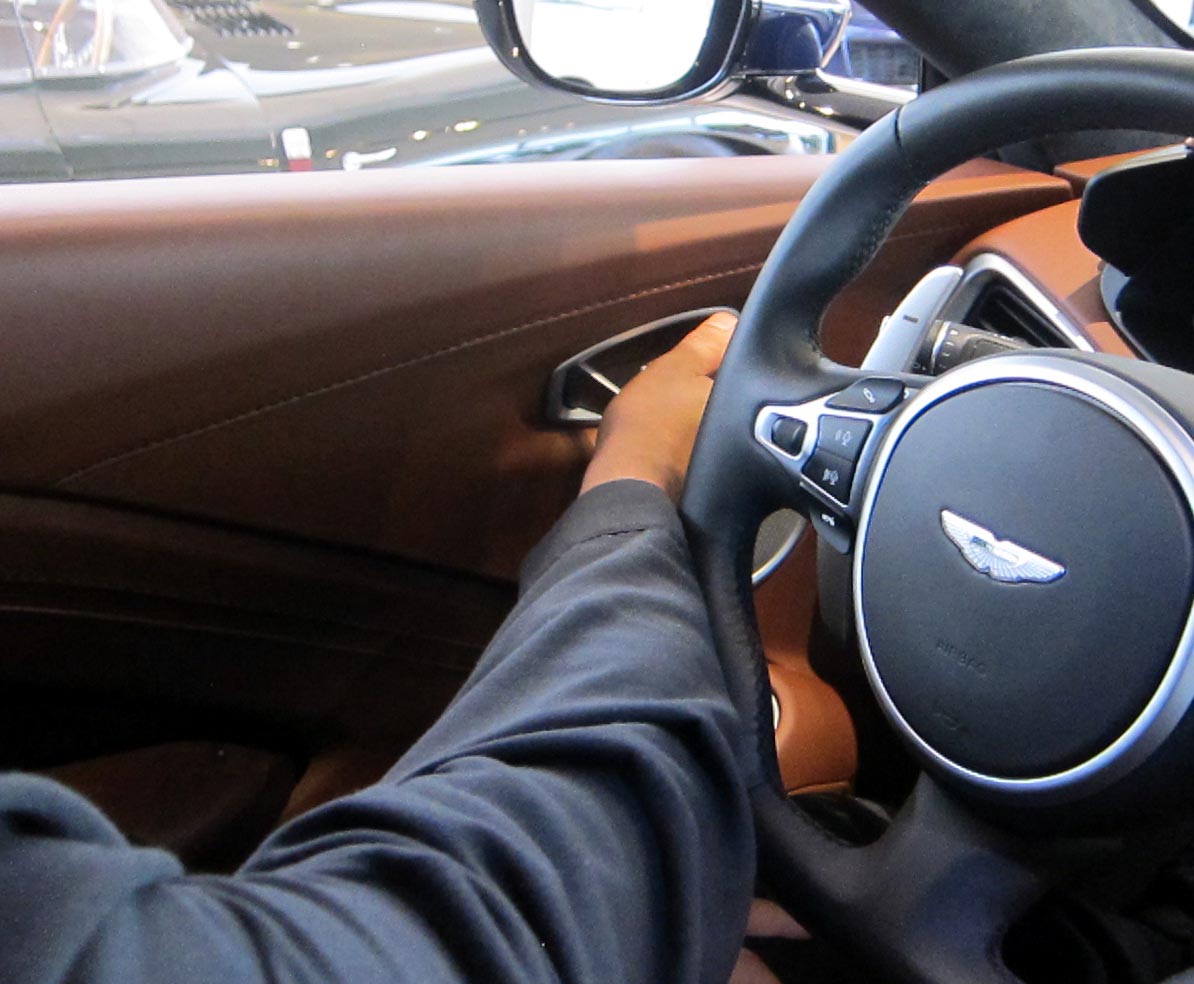
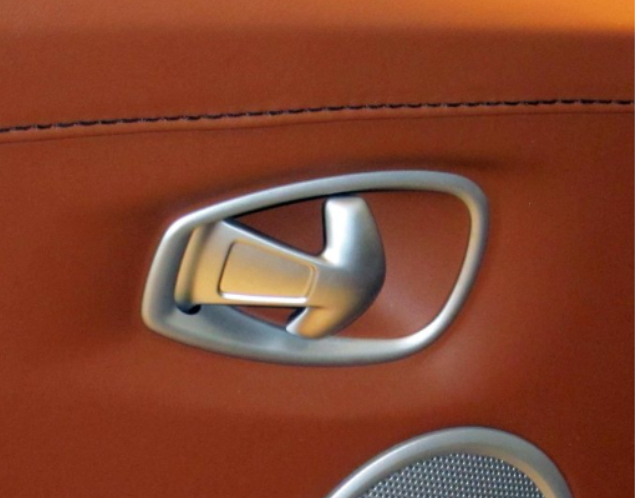

![Driver side or left door of Vantage sports car by Aston Martin with dutch reach lever whichis easiest to open with hand farther from the door. Lever is short and angled in, with a cupped T end, set into a recess, well-suited for finger tips to engage & pull. [Right door.]](https://www.dutchreach.org/wp-content/uploads/2019/10/IMG_4575-AMV-L-door-partopen.jpg)
